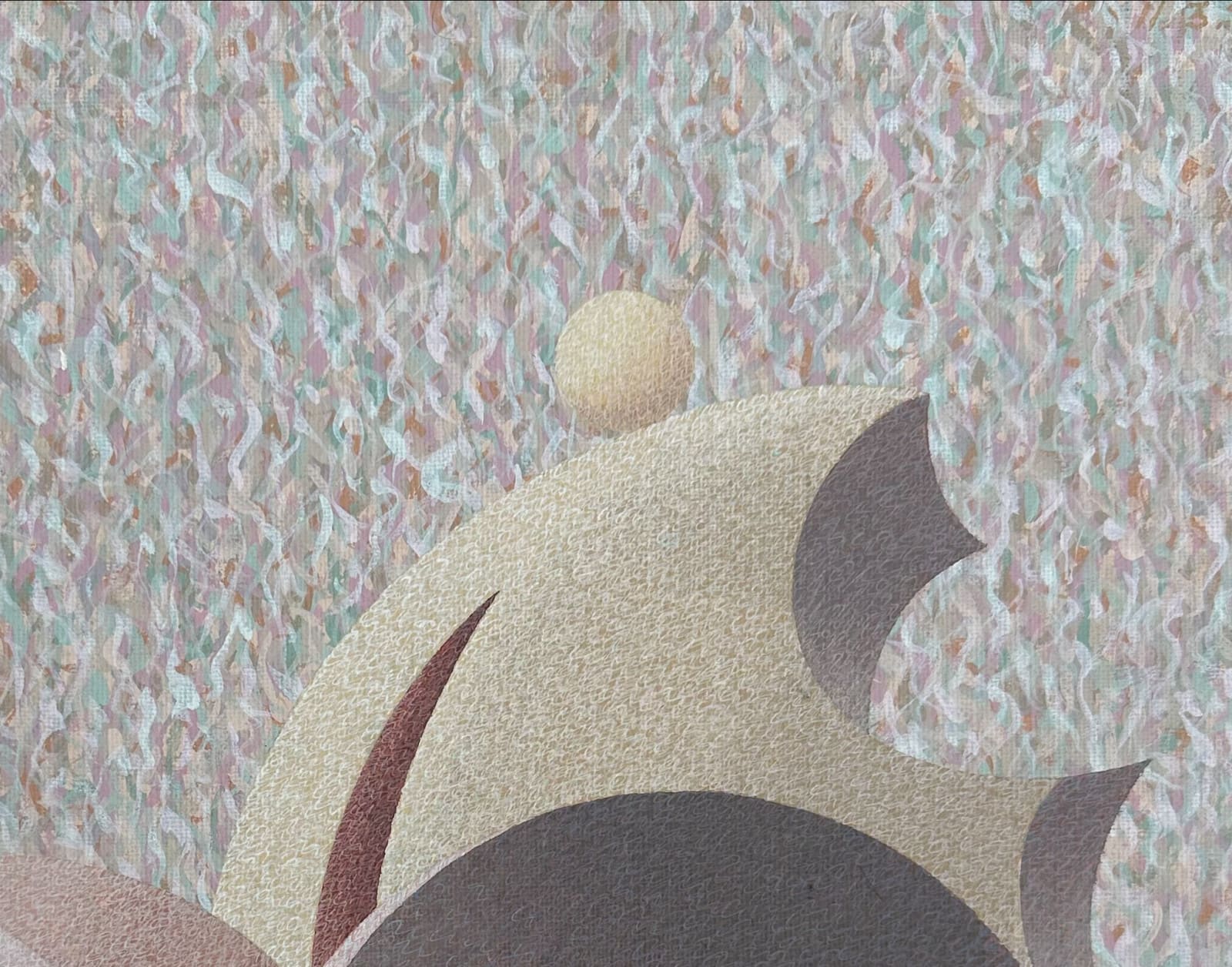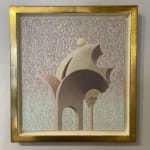Henry Orlik b. 1947
With artist's stamp on verso
Framed: H. 41 cm x W. 38 cm., H. 16 in. W. 15 in.
Further images
Orlik depicts a ruined architectural folly which is seemingly pristine. It has cut-off arches, almost as if the folly has been un-folded and the dome above is cut-out, like a bite has been taken out it. The folly balances impossibly on three thin columns. It becomes unclear which piece belongs to which and it is as if the folly has been turned around and the arched segment leading out to the left, could slot into the section seemingly cut out of the dome. It creates an optical illusion and the folly seems to float in the atmosphere. A round ball on the top of the dome appears like the ‘head’ of the building and then the folly becomes a figure on three legs, with rounded body. Like many of Orlik’s paintings, threads or individual hair rises between one arch and floats in serpentine lines upwards.
The ground of the painting is made up Orlik’s excitation brushstrokes in wonderfully soft shades of pinks, whites, turquoise and yellow – graduated so that it becomes darker at the top. The result is a calm and meditative piece.
The folly was a costly ornamental building with no practical purpose, but maybe used as a place for contemplation, reading or assignations. They were sometimes built as a ruin or a mock Roman or Chinese temple and as a means to display the education, taste (and wealth) of the owner. It was usually built for a gentleman on his estate and, of course, could represent a pun, indicating the folly of man.








